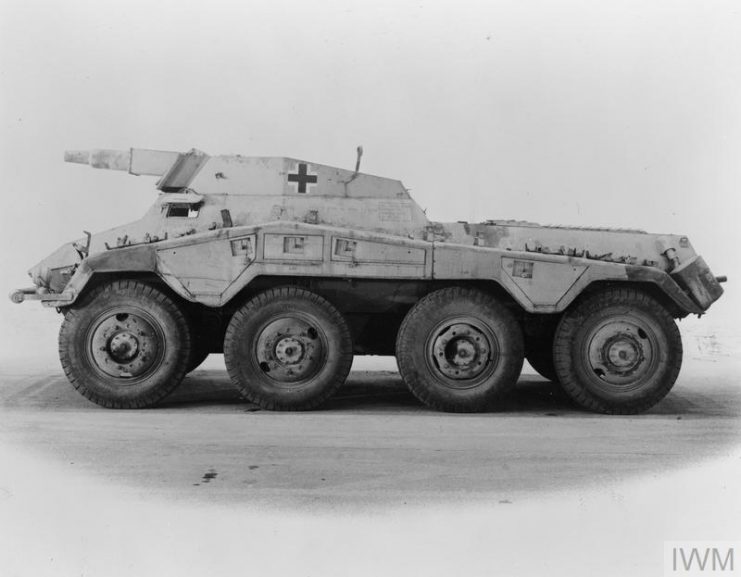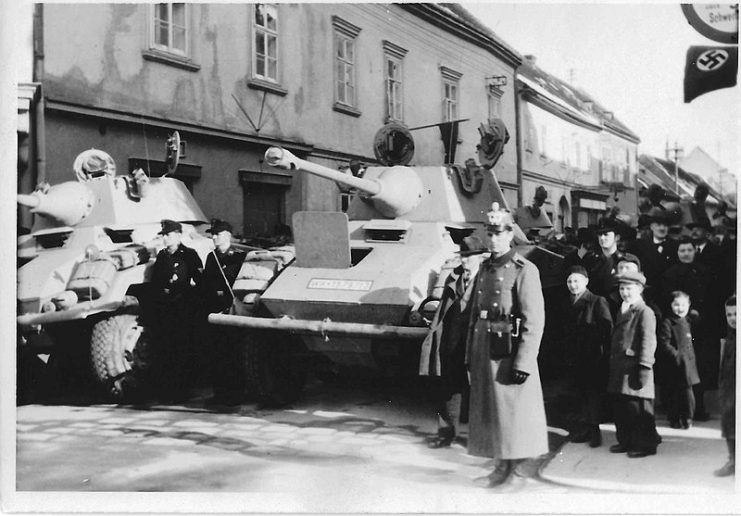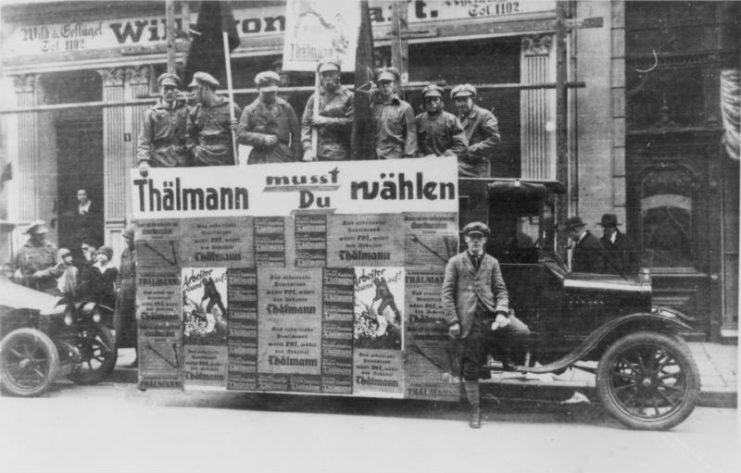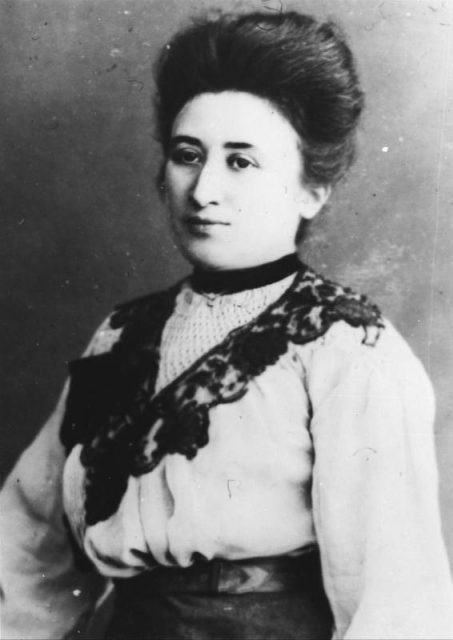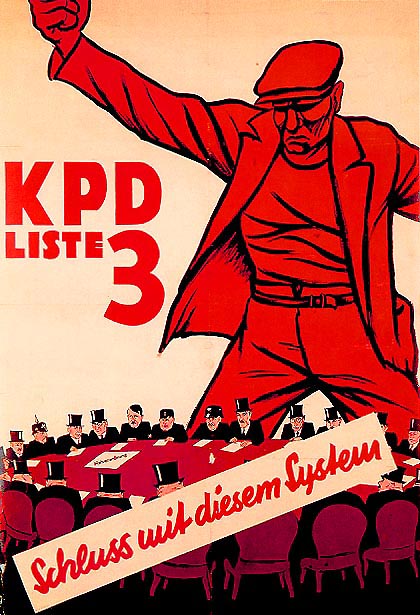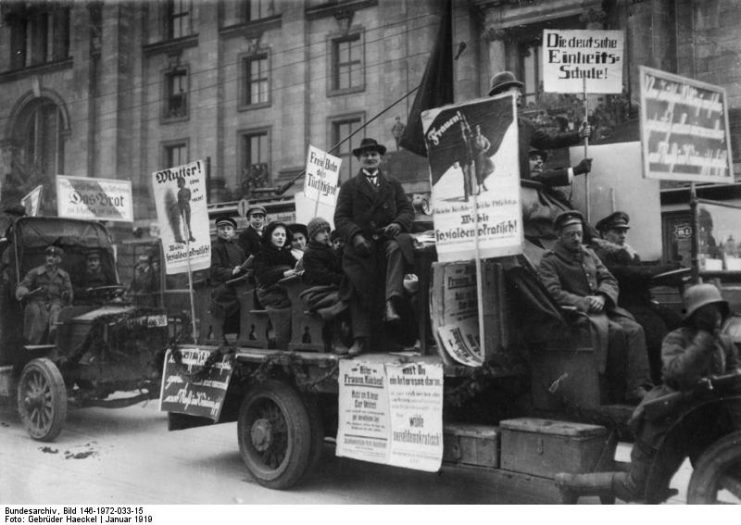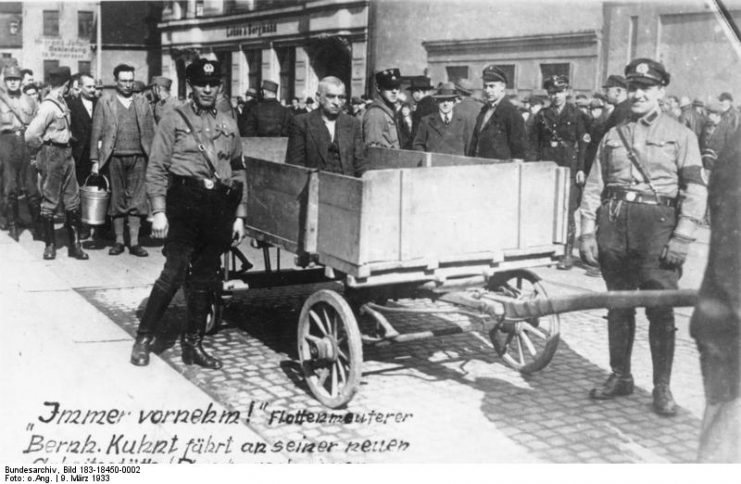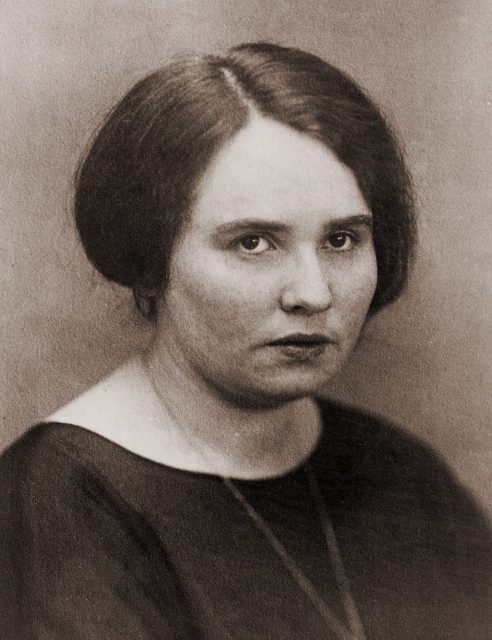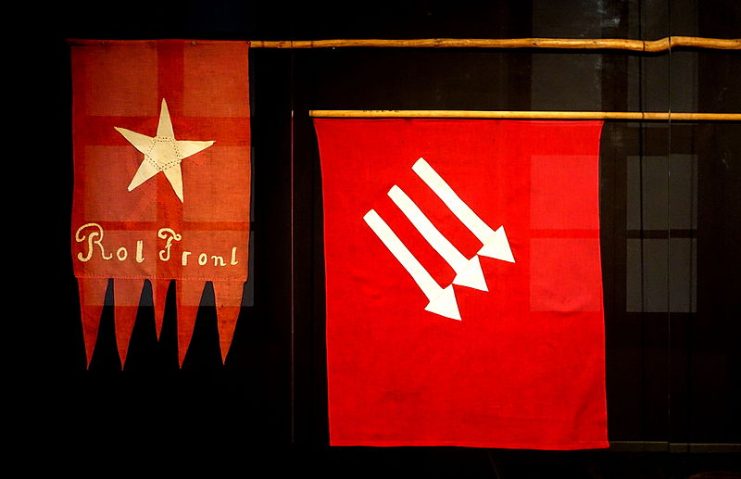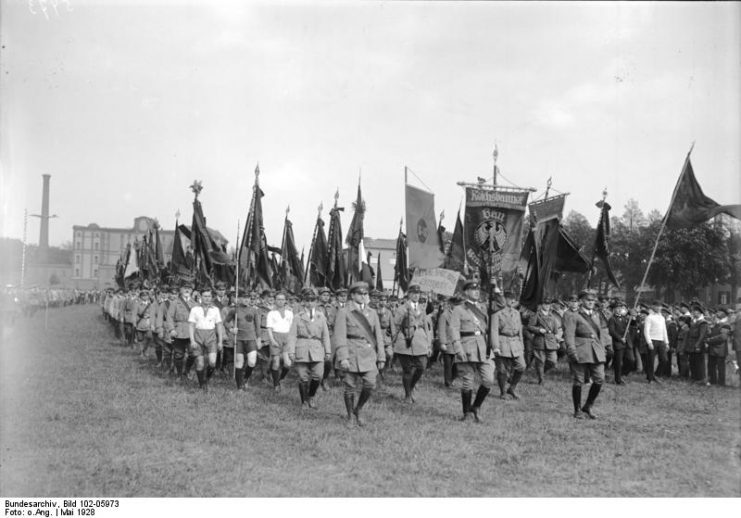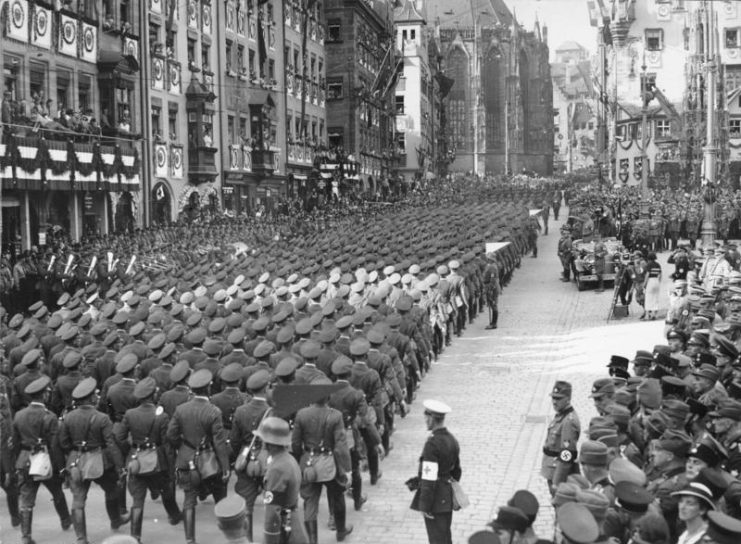I Remembered hearing about the Franco-Prussian War of 1871 when I was reading a book about "Louis Pasteur" and he was embarrassed and angry about how the French had their butts handed to them by the Prussians. He also visited his son who was wounded fighting the Prussians near Paris if memory serves. I started doing some research on the cause of the war and down the rabbit hole I went :)
Throughout the centuries, the European continent has hosted many wars of conflict, laying waste to its countryside, and killing thousands of its citizens. These outbreaks of violence came about over religion, power, and petty disagreements in wars lasting over one-hundred years in some cases. Even though the human suffering was horrific during these battles, warfare was conducted in an almost elementary approach with strategy as an afterthought. This approach begins to change with the founding and successful expansion of the Prussian Empire across central Europe. The Prussians brought new methods and techniques to the art of warfare through its professional application of strategy as a science and an art. The Prussian Empire during the 1871 war with the French was controlled by the then Prime Minister Otto von Bismarck even the Emperor of Prussia referred to Bismarck due to the power arrangements of the empire. Bismarck had the goal of uniting all Germans under one flag and destroying the threat the French posed from the West.
The adversaries of the Prussian Empire were their neighbors to the west; the second French Empire led by the elderly Napoleon III the nephew of Napoleon. The French, up until the late 18th Century relied on its ability in win wars employing strategy called élan. Using this strategy the French believed that they were superior in their ability to mass its infantry on the enemy and win the day. The French believed so much in élan that it led to a false state of security in matters of defense and innovation.
Bismarck used diplomatic pressure by attempting to put a low nobility German Prince on the vacant Spanish throne. Prince Leopold, a prince from the royal House of Hohenzollern would be the instrument used by Bismarck to execute the diplomatic phase of DIME. If the Prussians could get Leopold on the Spanish throne, they could essentially box the French in on all sides. This action almost created a potential trading block allied to the Prussians.
On July 2, 1870, that the Spaniards were about to crown Leopold, this led to an outcry in France. The French were caught sleeping to the threat and acted very slowly to recognize the danger being created by Bismarck. Further endangering the French to this maneuver was the fact Napoleon III tried to look the other way and not engage. The citizens of France immediately took to the streets throughout France in protest. This action caused French society to consider this an insult to France leading to the population and political leaders demanding war to protect their honor. French military leaders were also worried about the possible influence that Prussia may be able to bring in Spain with a fellow compatriot of theirs on the throne. The Prussians were truly using diplomatic actions and strategy of science by turning the tables on the French by making them confront the possibility it will be them facing a two front war by boxing them in between Spain and Germany. This action was a stroke of pure genius by Bismarck even before any fighting begins against the French. Bismarck’s actions caused so much pressure on French leadership that Napoleon III looked weak and out touch with reality. The French press and politicians vilified the Emperor for allowing their country to be slighted by Bismarck and the Prussians.
The Kaiser in response to the fury caused decided to attempt a sort of reconciliation with Napoleon III by sending the French leader a letter offering peace. The crafty old Bismarck intercepted the letter and changed the wording blaming the French for causing upheaval. This letter became famously know as Ems Depesche, Bismarck actions were the information piece of using statecraft in DIME. This aroused nationalist outrage in Germany and France causing the French to declare war on the Prussians. By using the information actions within DIME, Bismarck forced Napoleon III hand.
The Emperor of France looked like fool and a laughing stock in European circles of power because the Prussian got the best of him. Napoleon III realized his position and his country appeared weak and it was his time to try his hand as strategy as a science. Since he did not want a war, he tried to check the Prussians growing power by using back door political moves, and at the same time quiet the growing opposition in the streets of Paris. These secretive moves would be the Emperor’s ends and ways to achieve the ends and ways, on statecraft of diplomatic and, informational actions to further his cause. He first dealt with his critics at home by trying to roll back the powers of the Parliament. When this body of politicians tried to check his moves toward more power, he simply jailed the leaders of the movement. The Catholic
Church was another obstacle in the quest of power by the Emperor and again he jailed Church leaders and drove the rest out of the country. Both groups became targets of an informational campaign to align them with the communist threat, and to show the French people that they were political agents and enemies of the Republic.
With the streets of Paris now cleared, Napoleon attempted to demonstrate his foreign diplomatic prowess by purchasing the Duchy of Luxembourg from the then owner, the King of the Netherlands. With the purchase of the Duchy, the Emperor wanted this land as a buffer from the ever-growing threat of the Prussians. This land grab also put the Prussians at a huge strategic disadvantage by funneling them and their efforts into deadly killing zones once war did begin with the French.
Bismarck quickly met this challenge by simply putting intense pressure on the Dutch Royals not to sell the Duchy of Luxembourg to the French. The Prussians communicated the danger of selling this land through diplomatic channels by threatening hostilities if the sale took place. The Dutch quickly got the message from the Prussian that their existence might be in jeopardy if the sale took place. Using attempted diplomatic strategy would have been a masterstroke of genius by Napoleon if it could have succeeded. By using this type of strategy, the French leader failed to appreciate the ability of Bismarck to checkmate his moves with his own strategy. Bismarck showed just how cunning he could be by releasing the messages on the possible sale of Luxembourg from the Dutch to the French with revised sentences. The changing and doctoring of the messages showed that Napoleon and the French people are not be trusted in Europe. The Prussians appeared to be the victims of further French aggression, marginalizing their efforts for German unification. With just a few faked sentences and threatening messages added from Bismarck he achieved his prewar Ends, Ways, and Means through information warfare aided by technology.
The disaster caused by the Prussians exposing the attempted sell of the Duchy of Luxembourg caused major domestic problems for Napoleon at home. He had to send Soldiers into the streets of Paris again and have them fire on protestors marching on his palace. The French labor unions and communist parties also did battle with Napoleon’s troops exposing further damage caused by the attempted failed purchase of Luxembourg. These violent uprisings caused a knee jerk response by Napoleon by jailing and exiling thousands of innocent French citizens.
The French people were demanding war, and seeing the chance to look like the bold leader when Napoleon declared war of the Prussians. Napoleon had several goals for his ends, ways, and means to deal for the last time with Prussians. Most important was to look strong, check the growing Prussian Empire, and maybe win a small war. Napoleon attempted to use the strategy of the military inside DIME and was met with disaster due to no planning for the war. The ultimate task for the French would have been to fight a war using the military and to put the citizens on a war footing by using their economic means to attack the Prussians. The French found out it is much easier to chant shout slogans like on to Berlin as a strategy than to execute the mission.
The French failure in the 1871 War with the Prussians goes back several years without a clear strategy of preparations in the mobilization of its military. The mobilization of armies clearly failed in the realm of strategy as a science. No longer could militaries win wars by just valor and élan, however, this was the approach the French tried to use and failed.
French Soldiers 1871
The French failed to invest in weapons technology and found themselves vastly outgunned and outranged by their enemy even before the battles had begun. The Prussians simply killed the French in the rear areas of the battlefield by using their advanced artillery. There were not any safe areas for the French to regroup, refit and rest during the fighting. They had no safe places except the French capital of Paris to adjust their strategy of art. The distances to the front caused further delays and false starts due to the poor communication nodes that the French failed to update as technology advanced.
The movement of troops to the front lines depended on the railroad first getting them to cantonment areas to form into battle formations. Often times, these areas turned into nothing more than masses of men drinking themselves into a state of drunkenness. Discipline further eroded due to reserve troops arriving with no clear chain of command and lacking training for modern warfare. The French had become little more than a peasant army that was over seven-five percent illiterate as the fighting started. This was due to a system set up previously that allowed a person of means to avoid any responsibility to defend his homeland of France.
French Officer Corp
Just the opposite of the uneducated peasants was a very educated officer corps in France that could have executed to a certain degree the strategy of science and art when deploying to their borders. Like many segments of French society during this time to include Napoleon and French politicians failed to grasp the needs and obligations of modern warfare. They failed to invest in new technologies of the day and adopt strategies that they could achieve. The only true strategy the French used was the need to rush to the border and attack with their faith in Elan. This strategy might have worked in previous war were only valor and fixed bayonets were needed but not in 1871. The French were facing an enemy in the Prussians that adopted a learning approach to execute both phases of science and art in in modern strategy.
Prussian and Bavarian Soldier 1871
The Prussians took a vastly different approach on how to best execute their strategy of uniting all Germans and to neutralize the threat posed by France. They had become a learning organization that fostered technologies that enabled them to better execute the strategy as a science and art through prewar planning and education. Such advancements as providing medical care, hot meals, and railroads usage allowed the Prussians to see their dreams of a homeland for all Germans become a reality.
Prussian "War Kitchen" as part of a medical train.
Providing something as simple as a hot meal to the troops in war provided a positive outcome on the fighting spirit and morale of the men doing the killing for Prussia. The Prussians knew this due to doing research and promoting strategy as a science by developing mobile kitchens. These kitchens were able to provide returning and arriving troops to the front a hot meal. The kitchens were also mobile enough to follow near to the troops for any major operation. The French had no such things as mobile kitchens to feed their troops on the battlefield. As the French Soldiers learned quickly by starting a fire to warm a meal, it almost certainly invited enemy artillery to attack them in their cantonment areas. Along with hot meals, the Prussians understood the need to have proper medical care for the troops fighting. They were the first in Europe to embrace the concept of marking medical wagons with the now excepted Red Cross emblem signify medical. Military doctors were given complete control of all medical operations when it came to the care of the wounded. The French did none of these actions in regards to medical operations on the battlefield.
Prussian Train Ambulance
Without any true strategy for fighting the Prussians, the French charged to the border without much guidance are even strategy. They learned quickly that it was not logical or even safe to race to the border with just their infantry. These mad dashes to the border allowed for the capture of the city of Saarbrucken for one day by the French. The French had to retreat across the border due to their inability of orders for advancement arriving and the failure to move the strategy as art. They failed to understand the early need for combined arms to wage war and left many troops isolated on the battlefield.
The result of these failures on the battlefield allowed for Bismarck to dictate the terms of the peace to the French. He quickly moved back into strategy as a science by ensuring that the threat from France would be forever neutralized. This included the partition and loss of the lands Alsace-Lorraine and the demand of payment from the French for the sum of five billion francs.
By successfully demonstrating both the understanding and the need to embrace the strategy of both science and the art phases, the Prussians won the war in 1871. In doing so, they were able to unite all Germans under the new German Empire. Additionally they neutralized the threat from the French to their new German Empire. The lack of strategy for both planning and fighting doomed the French to defeat for many years to come.
The new German Empire reputation was greatly burnished by the abject humiliation of France and the new country became a force to be reckoned with especially by England who had viewed the defeat of France with some interest and the New German empire started having expansionist goals outside of its borders of Europe and that greatly impacted Great Britain who was at the Zenith of her power and the Germans started building a Navy to challenge the Royal Navy on the High Seas. The defeat of France indirectly set the seeds of WWI 50 years later.
This new Blogger interface of sucks...it is a pain to manipulate pictures and import them.*Bleh*











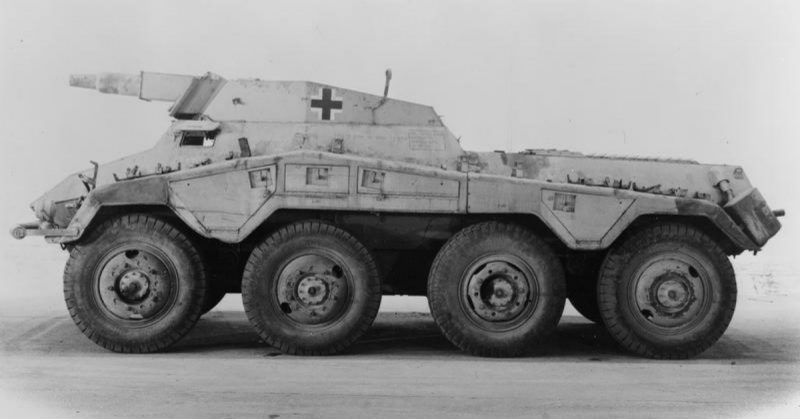
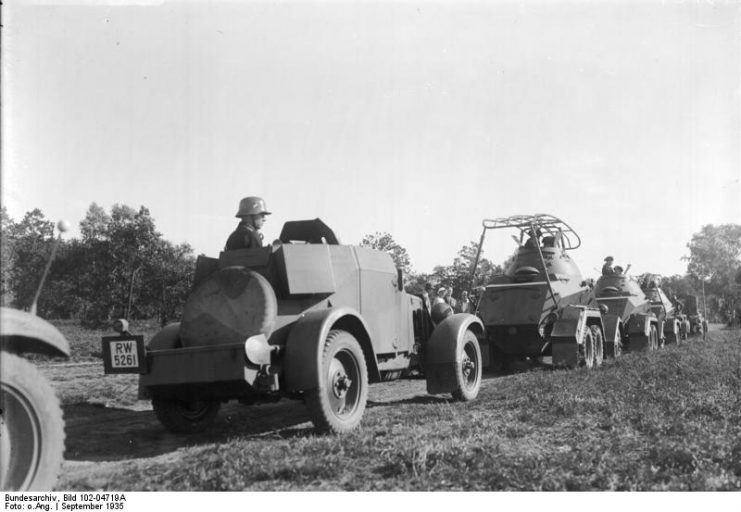
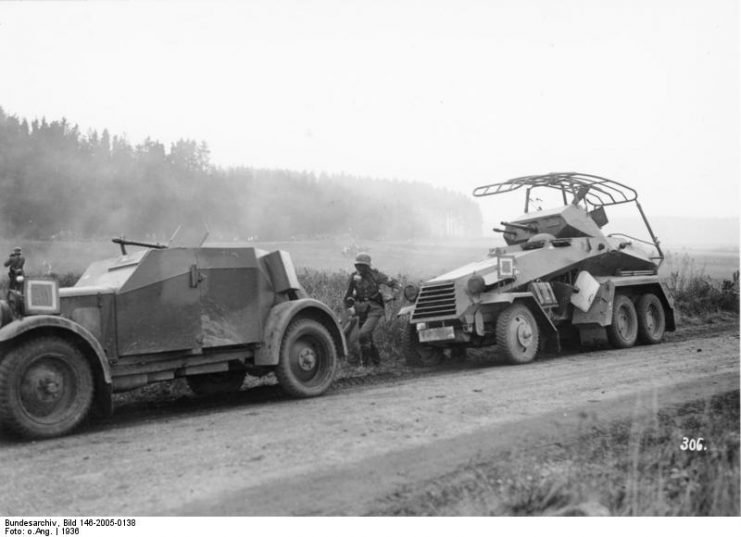 Left:
a Kfz 13; right: an armoured Sd.Kfz. 232 with large loop antenna
(6-wheeled radio and command vehicle).Photo: Bundesarchiv,
Developed by Auto-Union/Horch and serving from 1935, the Sd Kfz 221
was the smallest of the specialist armored cars that superseded the Kfz
13. This time, the chassis was specially developed for military
purposes, with a rear engine, four-wheel drive, low-range gears suited
to cross-country travel, and sloped side armor. Its open-topped turret
usually carried a 7.93mm machine gun, though some were equipped with an
anti-tank rifle.
Left:
a Kfz 13; right: an armoured Sd.Kfz. 232 with large loop antenna
(6-wheeled radio and command vehicle).Photo: Bundesarchiv,
Developed by Auto-Union/Horch and serving from 1935, the Sd Kfz 221
was the smallest of the specialist armored cars that superseded the Kfz
13. This time, the chassis was specially developed for military
purposes, with a rear engine, four-wheel drive, low-range gears suited
to cross-country travel, and sloped side armor. Its open-topped turret
usually carried a 7.93mm machine gun, though some were equipped with an
anti-tank rifle.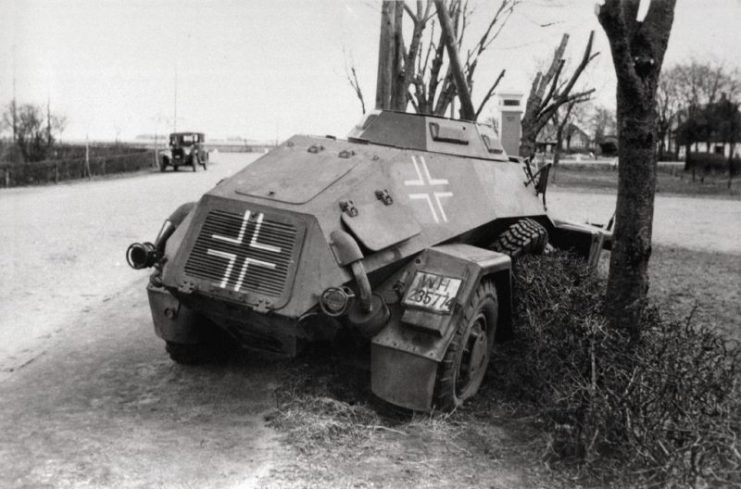
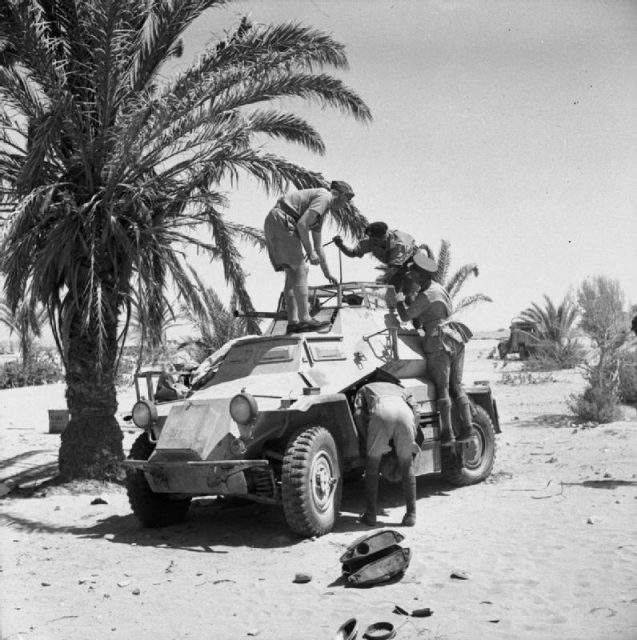
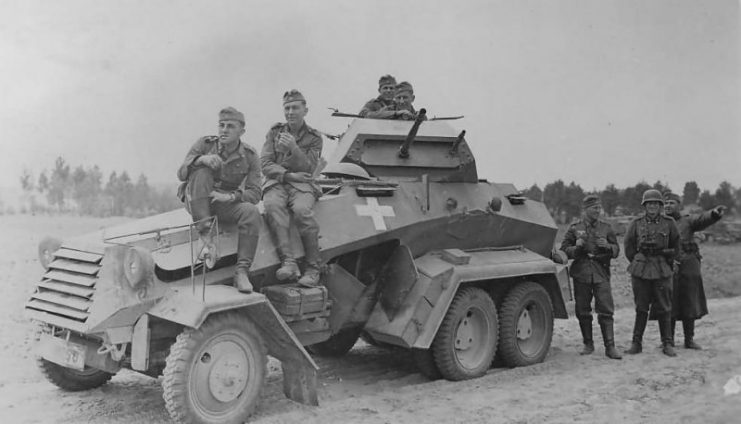
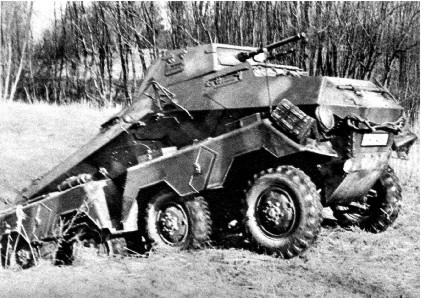
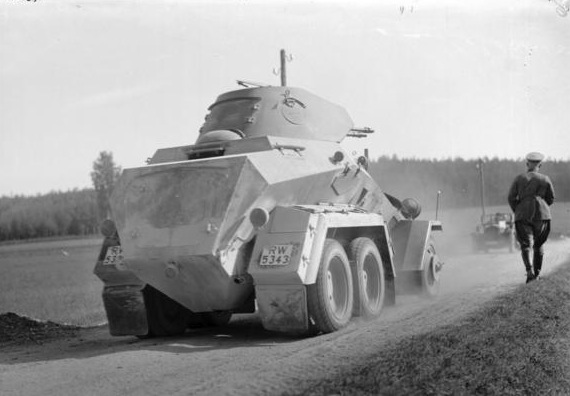
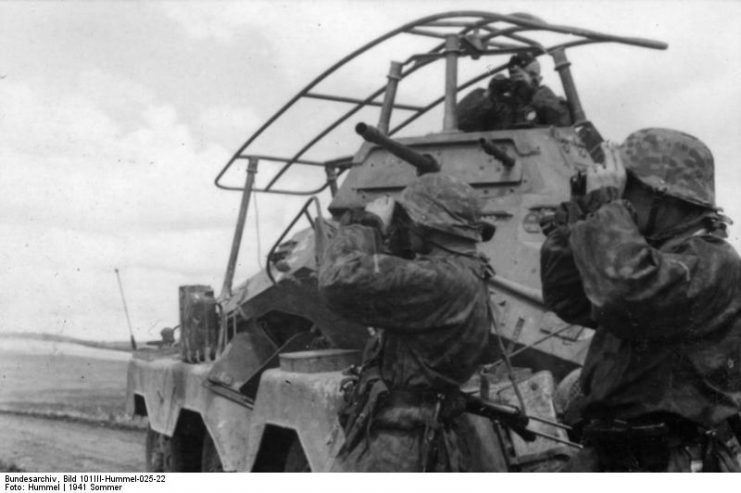 8 Rad Sd.Kfz. 232 radio vehicle of the 5th SS Panzer Division Wiking in Russia, 1941.Photo: Bundesarchiv, BildThe Sd Kfz 232 had an armored body built over a relatively slender
chassis. It was originally equipped with a 7.92mm machine gun and a 20mm
automatic cannon, but this was later upgraded to a short 75mm gun, with
this more heavily armed vehicle given the designation Sd Kfz 233.
Despite its complex mechanical layout, this series of vehicles became
very popular with the army and they were widely used.
8 Rad Sd.Kfz. 232 radio vehicle of the 5th SS Panzer Division Wiking in Russia, 1941.Photo: Bundesarchiv, BildThe Sd Kfz 232 had an armored body built over a relatively slender
chassis. It was originally equipped with a 7.92mm machine gun and a 20mm
automatic cannon, but this was later upgraded to a short 75mm gun, with
this more heavily armed vehicle given the designation Sd Kfz 233.
Despite its complex mechanical layout, this series of vehicles became
very popular with the army and they were widely used.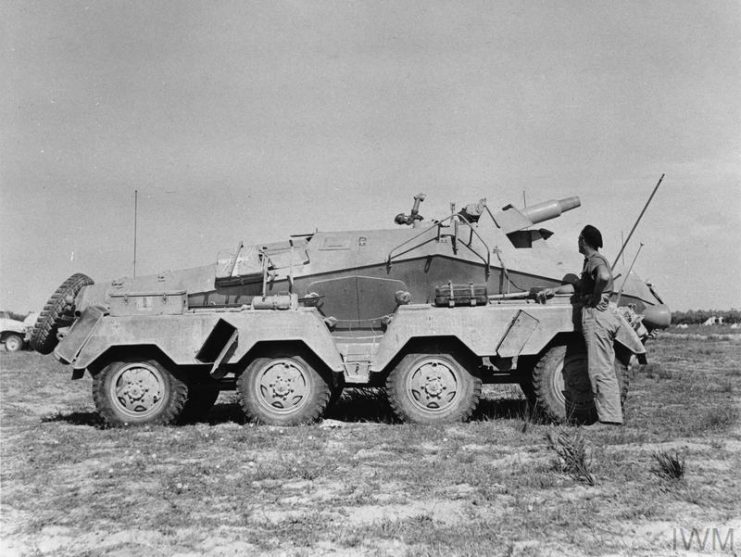
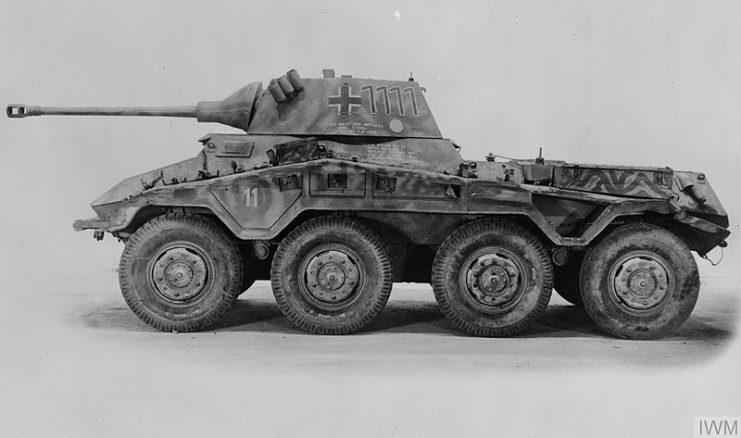
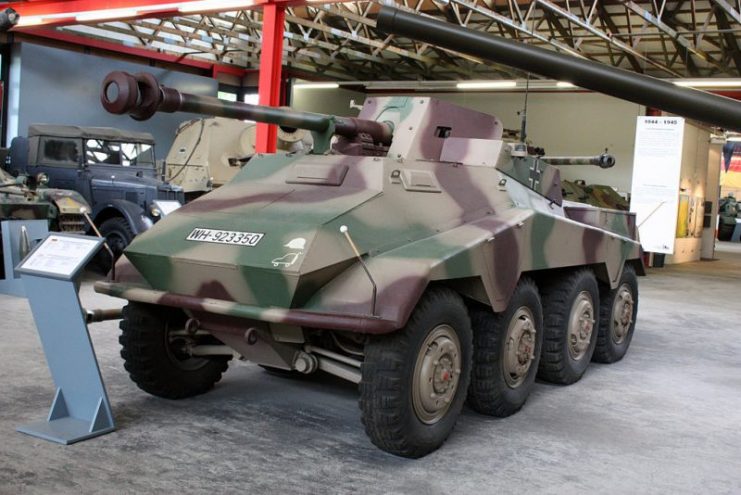 Sd.Kfz. 234 4 Pakwagen, Munster Panzermuseum, Germany
Sd.Kfz. 234 4 Pakwagen, Munster Panzermuseum, Germany
